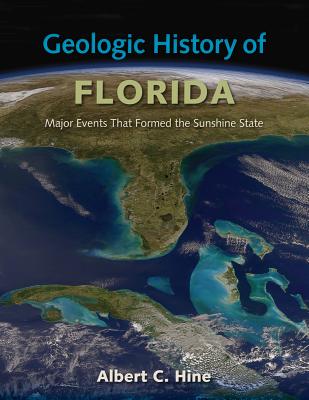

 University Press of Florida
University Press of Florida
Geologic History of Florida: Major Events That Formed the Sunshine State


Key Metrics
- Albert C Hine
- University Press of Florida
- Paperback
- 9780813064123
- 10.9 X 8.5 X 0.6 inches
- 2.15 pounds
- Science > Earth Sciences - Geology
- English
 Secure Transaction
Secure TransactionBook Description
Seven hundred million years of time go whizzing by in this beautifully illustrated account of Florida's geologic history. The story centers on the long and intimate relationship between Florida and her enveloping seas, beginning with wandering continents, continuing through the 'carbonate factory' in the sea that produced much of the volume of the Florida Peninsula, and ending with the story of sand grains on Florida beaches hundreds of miles from their points of origin. For those curious about their natural surroundings, Albert Hine's book will surely open a new window and a new appreciation for the complexity and beauty of nature in Florida.--Orrin Pilkey, coauthor of Global Climate Change: A Primer
The saga of Florida's geological development started approximately 700 million years ago. It began as the state's basement rocks migrated nearly 12,600 kilometers from their position within a supercontinent at the Earth's South Pole to their present location north of the equator, participating in the assembly and disassembly of one of Earth's greatest supercontinents, Pangea.
In this complete geologic history of the Sunshine State, Albert Hine takes the reader on a journey that begins with the breaking apart of Pangea and ends with the emergence of south Florida and the Keys; explaining the shape and form of the state as we know it today. Geologic History of Florida chronicles the creation of the Gulf of Mexico, the Caribbean Sea, the western Atlantic Ocean, and other major events in Florida's geologic past. It looks back 160 million years, to a time when the ancient igneous and metamorphic basement rocks were covered by a large sedimentary carbonate platform nearly 3 miles thick, known as the Florida Platform. Today, Florida still rests upon this larger geologic feature, fifty percent of which is submerged. Consequently, the geologic story of the state includes what lies beneath the seafloor as much as it involves the land surface.
Writing in a clear and accessible manner, Hine discusses the geologic changes of the Florida Platform, from dissolution tectonics, which formed great underwater caverns and sinkholes, to the plate collision with Cuba. Hine explains geological phenomenon like the influx of quartz-rich sand from the southern Appalachian Mountains that made Florida's white-sand beaches a destination for tourists from around the world. He examines the state's phosphate-rich deposits, which account for thirty percent of the world's phosphate production, and other hot-button issues such as oil drilling and climate change.
With a glossary of essential terms at the end of each chapter, Geologic History of Florida will be an invaluable resource for geologists, students of Earth history, and anyone interested in how the Sunshine State physically came to be.
Author Bio
Dr. Hine is fundamentally a broadly-trained geological oceanographer who has addressed sedimentary geology/stratigraphy problems from the estuarine system out to the base of slope—primarily in carbonate or mixed siliciclastic/carbonate environments. He, his associates and graduate students have defined the response of coastal and shelf depositional systems to sea-level fluctuations, climate changes, western boundary currents, antecedent topography, and sediment supply.
Specifically this includes geologic origin and evolution of submerged paleo-shorelines, reefs (relict and active), shelf sand bodies, open marine marsh systems, barrier islands, and back-barrier environments. Hine’s primary research tools are high-resolution seismic reflection profilers, side-scan sonars, swath bathymetric systems, geoacoustic seafloor-classification systems, and ROV’s. Additionally, they have used a variety of submersibles including the DSRV Alvin and Clelia.
Dr. Hine has participated in >75 research cruises including the JOIDES Resolution (Co-chief scientist—Leg 182, and sedimentologist—Leg 194). Dr. Hine won the Francis P. Shepard Medal for excellence in marine geology in 2009.
Source: University of South Florida
Videos
No Videos
Community reviews
Write a ReviewNo Community reviews